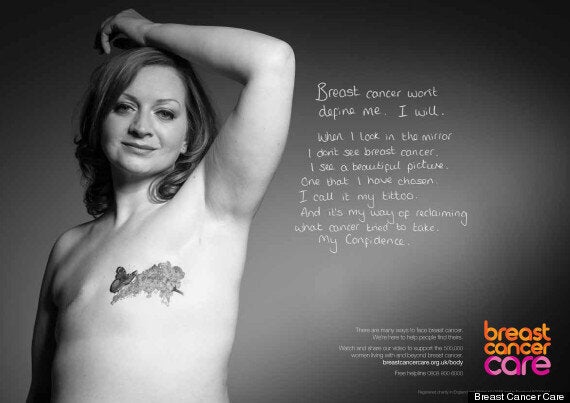Secondary breast cancer is the overshadowed big sister of primary breast cancer.
It occurs when cancer cells spread from the first (primary) tumour in the breast via the lymphatic system or the blood. It is estimated that 36,000 people are living with the advanced disease in the UK, 12,000 of who are in the last year of life.
But, unlike the breast cancer stories we see so often in the media, there are no survivors. These women (and men) will live with breast cancer everyday for the rest of their lives - the condition is incurable.
Each case is different, so people can live with secondary breast cancer for years and years. So rather than beating or fighting cancer, the focus of patients and their loved ones shifts to managing the disease and minimising disruption to everyday life.
HuffPost UK Lifestyle interviewed Ismena Clout, 38, who had decided to have her second breast removed 18 months ago, after she was diagnosed with secondary breast cancer.
She spoke with admirable honesty and strength of character - despite speaking to us over the phone while in hospital for treatment - about her changing relationship with her body (particularly a 'tittoo' over the scar where her left breast used to be), the rigid physical definitions of femininity and the importance of spreading awareness about secondary breast cancer.

Secondary breast cancer is mainly treated by hormone therapy, chemotherapy, targeted therapies, and radiotherapy. Why did you choose to have an elective mastectomy to remove your right breast?
I had my first mastectomy - to remove my left breast - in 2004, following my diagnosis with primary breast cancer.
At the time I decided not to have a reconstruction as the surgery was two to 13 hours, with a long recovery time. I was 29 at the time and my treatment cycle was already taking up an entire year of my life - I wanted to get back to living as soon as possible.
Then, I received my second diagnosis: the cancer had spread to my vertebrate. It was then that I decided to have my second breast removed.
Was it a difficult decision to make?
My relationship with my breasts has changed dramatically. They are no longer a play thing - they tried to kill me. They are killing me.
Wearing a bra, with my prosthesis, was painful - the strap was digging into my back. I was also home a lot, not wearing a bra and I was sick of being uneven.
When I didn’t wear a bra I felt uneven and when I did I was in pain - my second mastectomy resolved both issues.
I also had to have an oophorectomy and had the two operations together.
Just like that, in a couple of hours, my second breast and ovaries were removed.
See Also:
Lingerie Boss Reveals What Goes Into Making Mastectomy Underwear
Meet Joanna Forest, Inspiring Breast Cancer Survivor Who Wears A Giant Boob To Spread Awareness
How have you redefined femininity for yourself, since having your breasts and ovaries removed?
The ultimate symbols of femininity are breasts and long hair. And this is precisely what cancer takes away from you - in my case, it was taken twice.
But, while I may no longer have breasts or ovaries, I am still very much a woman.
I still want to be feminine, it’s just a case of finding a new way of dressing to suit my body shape.
Unlike before when I had my prosthesis and had to wear tea dresses, I can now wear low-cut tops. I wear bright scarves, structured tops, lace.
Dressing well is all about confidence.
Tell us about your 'tittoo'...
I got my 'tittoo' about a year ago, to cover my first mastectomy scar - it didn't even hurt because there are no nerve endings.
The design itself is a tribute to my mother and my childhood.
The purple budilla flower - which she remembers from her time living in London during WWII - is the first thing to grow out of an area of devastation. The butterfly is also beautiful and is a symbol of metamorphosis.
I used to be snooty about tattoos. I worried about what they would look like in old age, when skin gets old and wrinkly. But then I thought: I'm not going to get older, so what am I worrying about?
I found Kerry, my tattoo artist, who is lovely. She was the only artist I found who really understood why I was having the tittoo and the symbolic significance.
What is it like living with secondary breast cancer?
To be honest, it feels like the forgotten part of the disease. The focus is overwhelmingly centred on primary breast cancer: year-long treatment cycles and survivor stories. Secondary breast cancer, with end stages and dying, is largely unspoken about.
People can live for years with secondary breast cancer, but it affects quality of life. The treatments make you nauseous and you can't take holidays.
Once diagnosed, the cancer is incurable. It's like managing a chronic disease, with palliative treatment only.
I'm 39 and deal with things that most people my age would never have to even think about.
For more information about secondary breast cancer visit breastcancercare.org.uk/secondaries